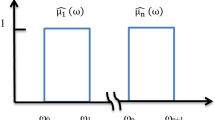Abstract
Pulse-like ground motions are capable of inflicting significant damage to structures. Efficient classification of pulse-like ground motion is of great importance when performing the seismic assessment in near-fault regions. In this study, a new method for identifying the velocity pulses is proposed, based on different trends of two parameters: the short-time energy and the short-time zero crossing rate of a ground motion record. A new pulse indicator, the relative energy zero ratio (REZR), is defined to qualitatively identify pulse-like features. The threshold for pulse-like ground motions is derived and compared with two other identification methods through statistical analysis. The proposed procedure not only shows good accuracy and efficiency when identifying pulse-like ground motions but also exhibits good performance for classifying records with high-frequency noise and discontinuous pulses. The REZR method does not require a waveform formula to express and fit the potential velocity pulses; it is a purely signal-based classification method. Finally, the proposed procedure is used to evaluate the contribution of pulse-like motions to the total input energy of a seismic record, which dramatically increases the seismic damage potential.
Similar content being viewed by others
References
Alavi B and Krawinkler H (2000), “Consideration of Near-Fault Ground Motion Effects in Seismic Design,” Proceedings of the 12th World Conference on Earthquake Engineering, 1–8.
Alavi B and Krawinkler H (2004), “Behavior of Moment-Resisting Frame Structures Subjected to Near-fault Ground Motions,” Earthquake Engineering & Structural Dynamics, 33(6): 687–706.
Baker JW (2007), “Quantitative Classification of Near-Fault Ground Motions Using Wavelet Analysis,” Bulletin of the Seismological Society of America, 97(5): 1486–1501.
Champion C and Liel A (2012), “The Effect of Near-Fault Directivity on Building Seismic Collapse Risk,” Earthquake Engineering and Structural Dynamics, 41(10): 1391–1409.
Chang Z, Sun X, Zhai C, Zhao JX and **e L (2016), “An Improved Energy-Based Approach for Selecting Pulse-Like Ground Motions,” Earthquake Engineering and Structural Dynamics, 45(14): 2405–2411.
Clough RW and Penzien J (2003), Dynamics of Structures, Berkeley, Calif.: CSI Computers & Structures, Inc.
Dante Sebastian Panella, Miguel E Tornello and Carlos D Frau (2017), “A Simple and Intuitive Procedure to Identify Pulse-Like Ground Motions,” Soil Dynamic and Earthquake Engineering, 94: 234–243.
Dickinson BW and Gavin HP (2011), “Parametric Statistical Generalization of Uniform-Hazard Earthquake Ground Motions,” Journal of Structural Engineering, 137(3): 410–422.
Hall JF, Heaton TH, Hailing MW and Wald DJ (1995), “Near-Source Ground Motion and its Effects on Flexible Buildings,” Earthquake Spectra, 11(4): 569–605.
Kalkan E and Kunnath SK (2006), “Effects of Fling Step and Forward Directivity on Seismic Response of Buildings,” Earthquake Spectra, 22(2): 367–390.
Kamai R, Abrahamson N and Graves R (2014), “Adding Fling Effects to Processed Ground-Motion Time Histories,” Bulletin of the Seismological Society of America, 104(4): 1914–1929.
Lu Y and Panagiotou M (2014), “Characterization and Representation of Near-Fault Ground Motions Using Cumulative Pulse Extraction with Wavelet Analysis,” Bulletin of the Seismological Society of America, 104(1): 410–426.
Mavroeidis G, Dong G and Papageorgiou A (2004), “Near-Fault Ground Motions, and the Response of Elastic and Inelastic Single-Degree-of-Freedom (SDOF) Systems,” Earthquake Engineering and Structural Dynamics, 33(9): 1023–1049.
Menun C and Fu Q (2002), “An Analytical Model for Near-Fault Ground Motions and the Response of SDOF Systems,” Proceedings, 7th US National Conference on Earthquake Engineering, Boston, Massachusetts, 21–25.
Oppenheim AV, Schafer RW and Buck JR (1999), Discrete-lime Signal Processing, Prentice Hall.
Petro Mimoglou, Ioannis N Psycharis and Ioannis M Taflampas (2014), “Explicit Determination of the Pulse Inherent in Pulse-Like Ground Motions,” Earthquake Engineering Structural Dynamics, 43(15): 2261–2281
Shahi SK and Baker JW (2011), “An Empirically Calibrated Framework for Including the Effects of Near-Fault Directivity in Probabilistic Seismic Hazard Analysis,” Bulletin of the Seismological Society of America, 101(2): 742–755.
Shahi SK and Baker JW (2014), “An Efficient Algorithm to Identify Strong-Velocity Pulses in Multicomponent Ground Motions,” Bulletin of the Seismological Society of America, 104(5): 2456–2466.
Somerville PG, Smith NF, Graves RW and Abrahamson NA (1997), “Modification of Empirical Strong Ground Motion Attenuation Relations to Include the Amplitude and Duration Effects of Rupture Directivity,” Seismological Research Letters, 68(1): 199–222.
Tian YJ, Yang QS and Lu MQ (2007), “Simulation Method of Near-Fault Pulse-Type Ground Motion,” Acta Seismologica Sinica, 20(1): 80–87.
Vassiliki Karsoutsou, Ioannis Taflampas, and Ioannis N. Psycharis, “A New Pulse Indicator for the Classification of Ground Motions,” Bulletin of the Seismological Society of America, 107(3): 1–9.
Wen WP, Zhai CH, Li S, Chang Z and **e LL (2014), “Constant Damage Inelastic Displacement Ratios for the Near-Fault Pulse-Like Ground Motions,” Engineering Structures, 59: 599–607.
**e L, Xu L and Adrian RM (2005), “Representation of Near-Fault Pulse-Type Ground Motions,” Earthquake Engineering and Engineering Vibration, 4(2): 191–199.
Zhai C, Chang Z, Li S, Chen Z and **e L (2013), “Quantitative Identification of Near-Fault Pulse-Like Ground Motions Based on Energy,” Bulletin of the Seismological Society of America, 103(5): 2591–2603.
Zhai C, Li C, Kunnath S and Wen W (2018), “An Efficient Algorithm for Identifying Pulse-Like Ground Motions Based on Significant Velocity Half-Cycles,” Earthquake Engineering & Structural Dynamics, 47(3): 757–771.
Zhao G, Xu L and **e L (2016), “A Simple and Quantitative Algorithm for Identifying Pulse-Like Ground Motions Based on Zero Velocity Point Method,” Bulletin of the Seismological Society of America, 106(3): 1011–1023.
Author information
Authors and Affiliations
Corresponding author
Additional information
Supported by: National Natural Science Foundation of China under Grant Nos. 51378341, 51427901 and 51678407, and National Key Research and Development Program under Grant No. 2016YFC0701108
Rights and permissions
About this article
Cite this article
Liu, P., Li, N., Ma, H. et al. Relative energy zero ratio-based approach for identifying pulse-like ground motions. Earthq. Eng. Eng. Vib. 19, 1–16 (2020). https://doi.org/10.1007/s11803-020-0544-3
Received:
Accepted:
Published:
Issue Date:
DOI: https://doi.org/10.1007/s11803-020-0544-3




